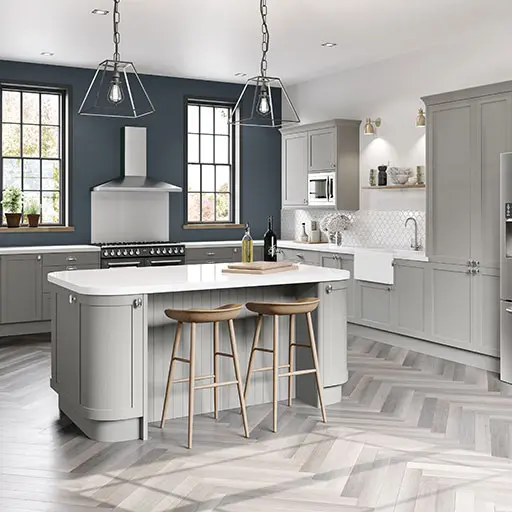
When starting a construction project, selecting the right materials is essential. Choosing between sealant and caulk can significantly impact the durability and efficiency of your work. Here, we’ll explore the differences, benefits, and best uses of sealants and caulks in construction.
Understanding Construction Sealants
What is a Construction Sealant?
A construction sealant is a high-performance material used to block the passage of fluids through surfaces or joints in building structures. It provides long-lasting sealing properties that can withstand various environmental conditions.
Types of Construction Sealants
- Silicone Sealants:
Flexible, durable, and resistant to UV rays, moisture, and extreme temperatures. Ideal for joints with significant movement. - Polyurethane Sealants:
Strong adhesion to various surfaces, including metal, wood, and plastic. Often used for paintable surfaces. - Acrylic Sealants:
Best for interior applications, paintable, and provide a smooth finish but less flexible.
Applications of Construction Sealants
- Window and Door Frames:
Prevent air and water infiltration. - Roofing:
Waterproofing and sealing around flashings and penetrations. - Expansion Joints:
Accommodate material expansion and contraction due to temperature changes.
Advantages of Using Construction Sealants
- Durability:
Can last for decades. - Flexibility:
Prevents cracking. - Resistance:
UV, chemical, and weather-resistant.
Understanding Caulk
What is Caulk?
Caulk is a material used to seal joints or seams against leakage in various structures and piping. It is generally less flexible and durable than sealant.

Types of Caulk
- Latex Caulk:
Easy to apply and clean, paintable, suitable for interior use. - Silicone Caulk:
Offers excellent flexibility and resistance to moisture and temperature changes. - Acrylic Latex Caulk:
Combines flexibility and paintability, suitable for a wide range of interior applications.
Applications of Caulk
- Baseboards and Trim:
Filling gaps to create a seamless finish. - Tiling:
Sealing joints between tiles in bathrooms and kitchens. - Piping:
Sealing around pipes and fixtures.
Advantages of Using Caulk
- Ease of Use:
Easier to apply and clean than sealants. - Cost-Effective:
Less expensive. - Paintable:
Many types can be painted to match surroundings.
Sealant vs. Caulk: Key Differences
- Flexibility:
Sealants are more flexible, suitable for areas with movement. - Durability:
Sealants are more durable and resistant to environmental factors. - Applications:
Sealants for high-performance needs; caulks for interior finishing. - Cost:
Caulks are more affordable.
Choosing the Right Product for Your Project
When to Use Construction Sealants
Use construction sealants for long-lasting, flexible solutions that can withstand harsh conditions. Ideal for:
- Exterior applications:
Windows, doors, roofing. - High-movement joints:
Expansion joints. - Waterproofing:
Bathrooms and kitchens.
When to Use Caulk
Caulk is suitable for interior applications where flexibility and durability are less critical. Use caulk for:
- Interior finishing:
Gaps around baseboards, trim. - Minor repairs:
Small cracks and joints. - Tiling and piping:
Sealing joints.
Finding Quality Construction Sealants in Melbourne
For those in Melbourne seeking high-quality construction sealants, several silicone sealant distributors offer a wide range of products. Choosing the right distributor ensures reliable and effective sealants for your projects.
Top Distributors in Melbourne
- Sealant Central:
Extensive range of silicone and polyurethane sealants for residential and commercial applications. - Melbourne Sealant Supplies:
Various construction sealants for builders and DIY enthusiasts. - A1 Sealants:
Specializes in high-performance sealants for various applications.
Conclusion
Understanding the differences between sealant and caulks is crucial for selecting the right product for your construction projects. Construction sealants offer superior flexibility, durability, and resistance, making them ideal for critical applications and harsh conditions. Caulks are cost-effective and easy to use, suitable for interior finishing and minor repairs.
By choosing the appropriate material for each task, you can ensure the longevity and effectiveness of your construction work. Whether you need a sealant for construction joints, waterproofing, or interior finishing, understanding these materials’ properties and applications will help you make informed decisions.
F&Q
Q: Can I use sealant instead of caulk for interior applications?
A: Yes, you can use sealant for interior applications, especially if flexibility and durability are important. However, caulk is often preferred for its smooth finish.
Q: What is the best type of sealant for exterior use?
A: Silicone and polyurethane sealants are best for exterior use due to their excellent weather resistance and flexibility.
Q: How long does construction sealant last?
A: The lifespan of construction sealant depends on the type and application, but high-quality sealants can last anywhere from 10 to 20 years.
Q: Can caulk be painted over?
A: Yes, latex caulk can be painted over, making it ideal for interior aesthetic applications.
Q: Where can I find reliable silicone sealant distributors in Melbourne?
A: Look for reputable local suppliers and distributors who offer high-quality silicone sealants suitable for your specific construction needs.







